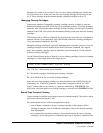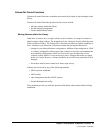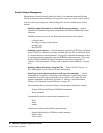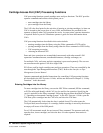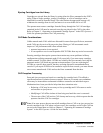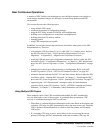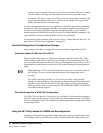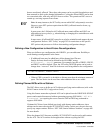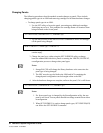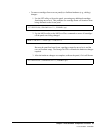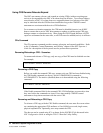
Chapter 2. Host Software Component Functions 49
1st ed., 6/30/04 - 312579601
Near Continuous Operations
A number of HSC facilities and techniques are provided that customers can employ to
avoid outages and make changes less disruptive to their library hardware and HSC
environment.
This section discusses the following topics:
• using multiple CDS copies
• automatic recognition of configuration changes
• using the SET utility instead of LIBGEN and reconfiguration
• defining a new configuration to avoid future reconfigurations
• defining planned ACSs with no stations
• changing panels
• using CDS rename/relocate/expand.
In addition, several other timesaving benefits are described in other places in the HSC
documentation set. These are:
• converting the CDS level from 2.0 to 2.1 while HSC 2.0.1 remains active. Refer to
the HSC Installation Guide, ‘‘CDS Conversion Requirements (Up-Level
Migration),’’ in Appendix D, ‘‘Migration and Coexistence Processes.’’
• resolving LSM and panel type configuration mismatches. Refer to either the HSC
Installation Guide, ‘‘Configuration Mismatches,’’ in Chapter 8, ‘‘HSC Initialization’’
or see the HSC System Programmer’s Guide, “Configuration Mismatches” on page
163.
• changing drive panel types without running a reconfiguration. Refer to the HSC
System Programmer’s Guide, “SET Device Numbers for Drives” on page 405.
• automatic internal cold start for HSC 2.0.1 and later releases. Refer to either the HSC
Installation Guide, ‘‘Starting HSC Execution’’ in Chapter 7, ‘‘Initializing the HSC’’
or see the HSC System Programmer’s Guide, “Starting HSC Execution” on page 225.
• suppressing the ‘‘ACS Disconnected’’ message to allow for future hardware
expansion. Refer to the HSC Operator’s Guide, ‘‘OPTION Command and Control
Statement,’’ in Chapter 2, ‘‘Commands, Control Statements, and Utilities.’’
Using Multiple CDS Copies
When multiple copies of the CDS are defined and enabled, the HSC automatically
recovers from errors on one of these copies. In a multiple-host environment, CDS
recovery is coordinated among the HSCs on all hosts.
• When there is a mismatch between information on the same block on the primary and
secondary CDS copy, the HSC automatically selects the most recent copy. When the
CDS is updated, the modified block is written to both the primary and secondary
CDS copies.
• If a secondary CDS copy is active, and a failure occurs in accessing the current
primary CDS copy, the HSC automatically makes the secondary CDS copy the



